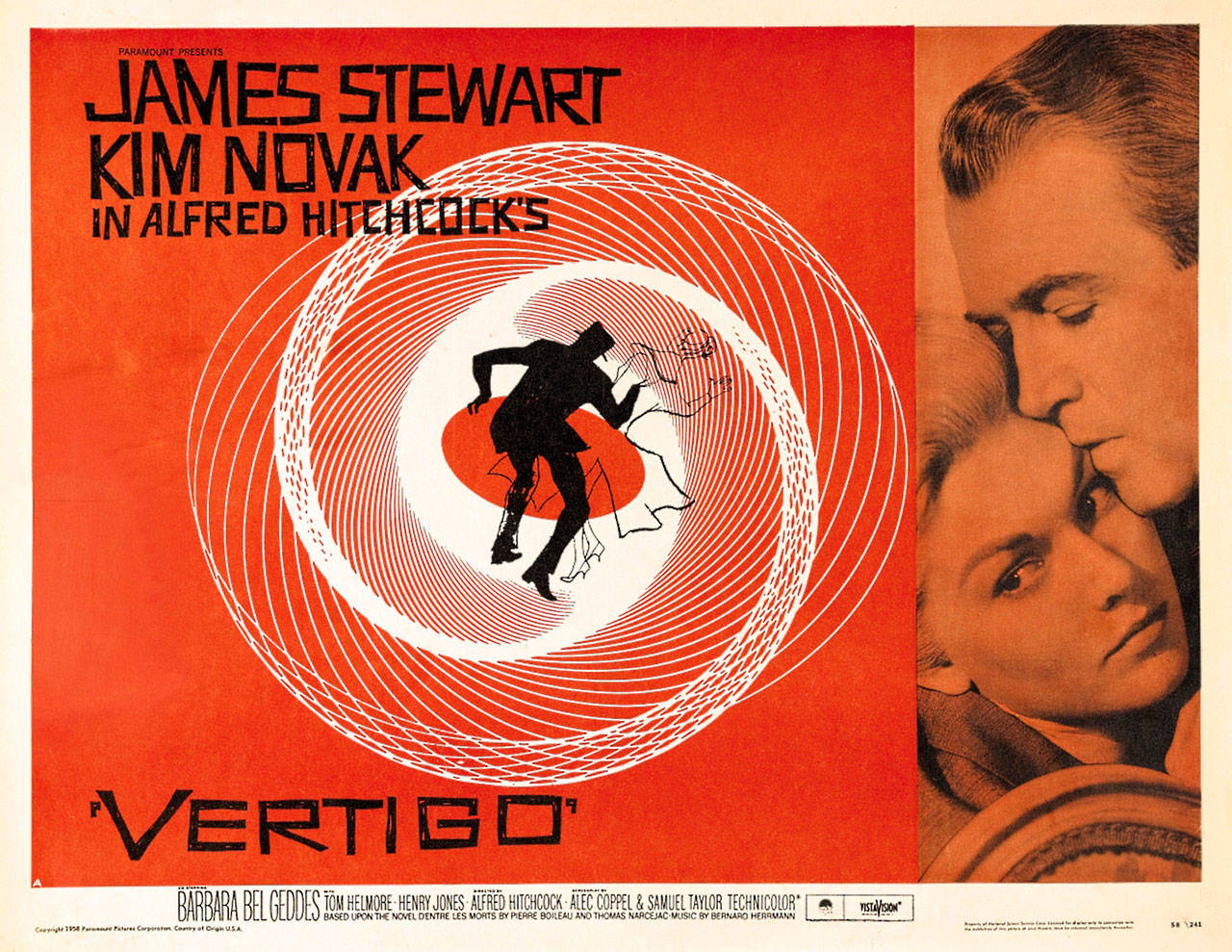The classic Alfred Hitchcock film noir thriller “Vertigo” (1958) will return to the big screen at Bainbridge Cinemas for a special 60th anniversary screening at 7 p.m. Wednesday, March 21.
The film stars James Stewart as former police detective John “Scottie” Ferguson, who is forced into early retirement because an incident in the line of duty has caused him to develop acrophobia (an extreme fear of heights) and vertigo (a false sense of rotational movement). Scottie is hired by an acquaintance, Gavin Elster, as a private investigator to follow Gavin’s wife Madeleine (Kim Novak), who is behaving strangely.
The film was shot on location in San Francisco, California, and at Paramount Studios in Hollywood, and was the first film to use the dolly zoom, an in-camera effect that distorts perspective to create disorientation, to convey Scottie’s acrophobia. As a result of its use in this film, the effect is often referred to as “the Vertigo effect.”
Though “Vertigo” received mixed reviews upon initial release, it is now often cited as a classic Hitchcock film and one of the defining works of his career. Attracting significant scholarly criticism, it replaced “Citizen Kane” (1941) as the best film ever made in the 2012 British Film Institute’s Sight & Sound critics’ poll.
It has also appeared repeatedly in polls of the best films by the American Film Institute, including a 2007 ranking as the ninth-greatest American movie of all time.
For ticket info, visit www.farawayentertainment.com/show/vertigo-60th-anniversary-1958.
Hitchcock — aka “Hitch” — was an English film director and producer, widely regarded as one of the most influential filmmakers in the history of cinema. He directed 53 feature films in a career spanning six decades, and he became as well-known as any of his regular actors thanks to his many interviews, his cameo roles in most of his films and his hosting of “Alfred Hitchcock Presents” (1955–1965).
From Wikipedia: “The ‘Hitchcockian’ style includes the use of camera movement to mimic a person’s gaze, thereby turning viewers into voyeurs, and framing shots to maximize anxiety and fear. The film critic Robin Wood wrote that the meaning of a Hitchcock film ‘is there in the method, in the progression from shot to shot. A Hitchcock film is an organism, with the whole implied in every detail and every detail related to the whole.’”



